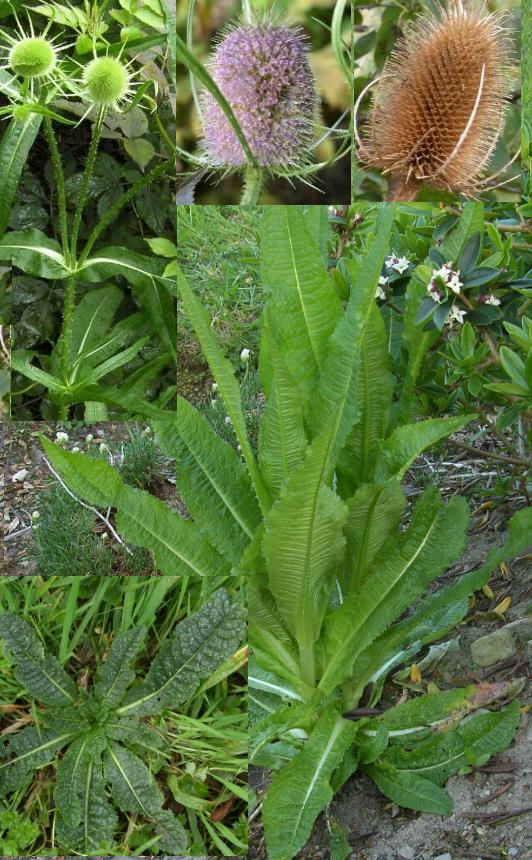Common TeaselScientific Name: Dipsacus fullonum |
Teasels are usually biennials, but are monocarpic, so they die after producing their seed and can grow for a few years if a mature flowering stem is prevented from developing. The dry, spiney seedheads have been used in the textile industry for centuries to tease out fibres to align them for spinning and to raise the nap on finished cloth. A form called Fuller's Teasel (D. sativum) has stouter and more developed hooks so was preferred. Although now replaced by metal combs, some purists still use teasels as the hooks break rather than tearing the cloth like metal would.
Due to its industrial use it can be found in areas where it is not native. The dried heads and stems are used in flower arranging so it is not always treated as a weed when it arrives in the garden.
The leaves of the basal rosette are oblong with spines on the surface. These die away as the flowering stem grows and it can reach up to 1.8 metres high. The stem has prickles and the long pointed leaves have no stalks, point upwards and have spines on the lower surface along the mid-rib. Water sometimes collects in the axils of the opposingly arranges leaves.
Flowering occurs between July and October. The egg-shaped head is made up of hundreds of small, purple flowers arranged in bands that open from the bottom upwards. These attract bees, butterflies and hoverflies which pollinate them. They are interspaced with spines that have hooked ends. The seedhead contains up to 2,000 seeds that attract small birds, especially Goldfinches.
The water that gathers in the leaf axils has been used to treat warts and freckles as well as having cleansing properties for use as an eyewash. The active ingredient could be the decaying insects that sometimes drown there. The infused root has been taken to stimulate the appetite or as a diuretic.
The basal rosettes put down a stout taproot, but this is fairly easily removed.
A systemic herbicide such as Glyphosate or a selective one, are best applied to the rosette stage.
Follow these links for further details on Weeds, Weed Removal and Weed Prevention.
